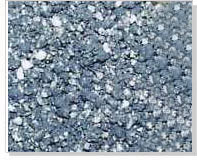 Refractory metals belong to a special class of metals that highly and exceptionally resistant to heat, wear, and corrosion. These properties make these reactive metals of use in various industrial applications.
Refractory metals belong to a special class of metals that highly and exceptionally resistant to heat, wear, and corrosion. These properties make these reactive metals of use in various industrial applications.
- Tungsten (W)
- Molybdenum (Mo)
- Niobium (Nb)
- Tantalum (Ta)
- Rhenium (Re)
Since these metals have a high melting point, the components are never fabricated by casting. Powder metallurgy process is used wherein the pure metal is compacted, heated using electric current, and further fabricated by cold working with annealing steps. Refractory metals can be molded and formed into wire, bars, ingots, sheets or foil.
Most of the refractive metals meet the compositional standards of the Unified Numbering System (UNS), a specification given by the American Society for Testing and Materials (ASTM), the Society of Automotive Engineers (SAE), and international metal trade associations including the American Iron and Steel Institute (AISI).
A buyer must analyze and select refractive metals keeping certain parameters in mind. The following should be analyzed:
- Dimensions: including overall length, outer diameter (OD) , inner diameter (ID) and thickness
- Performance features: including resistance to heat, corrosion and wear.
- Production processing
Refractive metals find applications find use in various industries and areas because of their special properties. Some of the areas/ fields where these metals are used are:
- Lighting
- Tools
- Lubricants
- Nuclear reaction control rods
- Medical devices
- Marine equipments
- Aircraft parts
